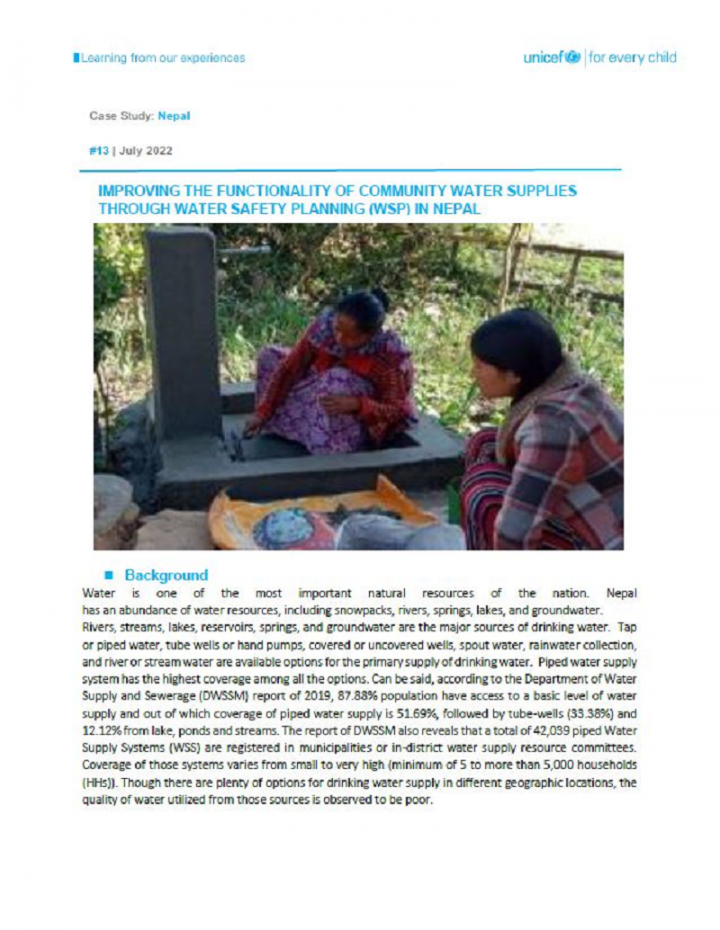IMPROVING THE FUNCTIONALITY OF COMMUNITY WATER SUPPLIES THROUGH WATER SAFETY PLANNING (WSP) IN NEPAL
Bhatt, R. B. (2022)

Published in: 2022
Pages: 6
Publisher:
UNICEF
Author:
Bhatt, R. B.
Uploaded by:
SuSanA Admin
708 Views
16 Downloads
Water is one of the most important natural resources of the nation. Nepal has an abundance of water resources, including snowpacks, rivers, springs, lakes, and groundwater. Rivers, streams, lakes, reservoirs, springs, and groundwater are the major sources of drinking water. Tap or piped water, tube wells or hand pumps, covered or uncovered wells, spout water, rainwater collection, and river or stream water are available options for the primary supply of drinking water. Piped water supply system has the highest coverage among all the options. Can be said, according to the Department of Water Supply and Sewerage (DWSSM) report of 2019, 87.88% population have access to a basic level of water supply and out of which coverage of piped water supply is 51.69%, followed by tube-wells (33.38%) and 12.12% from lake, ponds and streams. The report of DWSSM also reveals that a total of 42,039 piped Water Supply Systems (WSS) are registered in municipalities or in-district water supply resource committees. Coverage of those systems varies from small to very high (minimum of 5 to more than 5,000 households (HHs)). Though there are plenty of options for drinking water supply in different geographic locations, the quality of water utilized from those sources is observed to be poor.
Bibliographic information
Bhatt, R. B. (2022). IMPROVING THE FUNCTIONALITY OF COMMUNITY WATER SUPPLIES THROUGH WATER SAFETY PLANNING (WSP) IN NEPAL. UNICEF
Filter tags
English South Asia















